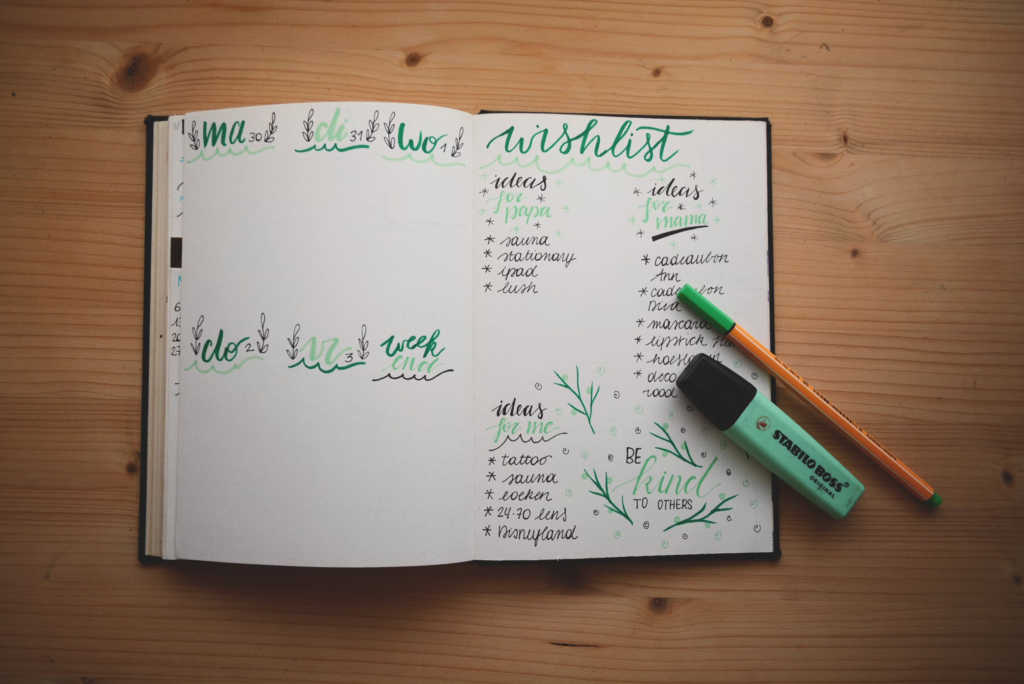In our fast-paced lives, we often overlook the small moments of joy and gratitude that bring true fulfillment. Gratitude journaling, the practice of regularly noting things we are thankful for, is a simple yet powerful way to shift our mindset toward positivity and contentment. By dedicating a few minutes each day to this practice, you can foster a deeper appreciation for life’s everyday moments and reshape your outlook on the world. Here’s how gratitude journaling works, why it’s effective, and how you can start your own gratitude journal.
Why Gratitude Journaling?
Gratitude journaling encourages us to focus on positive experiences, helping to improve our overall well-being. Research shows that regularly acknowledging what we’re grateful for can boost mental health, improve relationships, and even promote better physical health. By focusing on the good, we gradually condition our minds to be more resilient and optimistic.

Benefits of Gratitude Journaling:
- Reduced stress and anxiety – Focusing on positive experiences helps to counteract negative thoughts.
- Improved relationships – Acknowledging others’ contributions strengthens bonds.
- Enhanced self-awareness – Reflecting on positive aspects of life helps build a greater sense of self.
How Gratitude Journaling Can Transform Your Mindset
When we practice gratitude, we are intentionally redirecting our thoughts to the present moment and the positive aspects of our lives. This habit encourages mindfulness and helps break the cycle of negative thinking, fostering a more optimistic and resilient mindset.
Key Ways Gratitude Journaling Shifts Your Mindset:
- Promotes Positivity – Recognizing the good encourages a positive mental state.
- Builds Resilience – Practicing gratitude during tough times builds strength and perspective.
- Cultivates Mindfulness – Gratitude helps you stay present, appreciating the ‘here and now.’
- Enhances Emotional Health – Studies show that gratitude can increase happiness and decrease depression.
How to Start a Gratitude Journal
Starting a gratitude journal doesn’t require fancy supplies or a lot of time. A simple notebook and a few quiet minutes each day are all you need. Here’s a step-by-step guide to help you begin.
Step 1: Choose Your Journal and Set a Routine
- Select a journal that you feel comfortable using daily. It could be a simple notebook or a dedicated gratitude journal.
- Set aside a specific time each day to write, such as in the morning to start your day on a positive note or at night to reflect before bed.

Step 2: Begin with Small, Specific Entries
- Start by writing down three things you’re grateful for each day. Be as specific as possible. For example, instead of just saying “I’m grateful for my family,” try “I’m grateful for my sister’s encouragement today.”
Step 3: Reflect on Your Entries
- Spend a few moments reflecting on each entry. Think about why these moments are meaningful to you and how they contribute to your life.
Step 4: Explore Different Prompts
- To keep things fresh, try different gratitude prompts. Examples include:
- “What made me smile today?”
- “What simple pleasure did I enjoy today?”
- “Who or what helped me today, and how?”
Step 5: Be Consistent and Patient
- The impact of gratitude journaling builds over time. Aim to make this a daily or weekly habit, and trust that the mindset shift will come with regular practice.
Gratitude Journal Prompts for Inspiration
To help you get started, here are some prompts to add variety to your gratitude journal entries:
- List three things you’re grateful for today.
- What small act of kindness did you experience this week?
- What are you looking forward to tomorrow, and why?
- Who inspired you today, and how?
- Describe a moment today where you felt truly at peace.
- What is something beautiful you saw or heard today?
- Who or what in your life brings you comfort and joy?

Using prompts can help you reflect on different aspects of gratitude and uncover new ways to appreciate life.
Tips to Maintain Your Gratitude Journaling Habit
Maintaining a gratitude journaling habit takes consistency, but there are strategies to help you stay committed.
- Set Reminders – Use phone alerts or calendar reminders to make time for gratitude.
- Find a Gratitude Buddy – Share your gratitude practice with a friend or loved one for added support.
- Keep it Simple – Don’t pressure yourself to write lengthy entries; even a few sentences can be powerful.
- Celebrate Progress – Review past entries occasionally to see how your perspective has shifted over time.
Conclusion: Embrace the Power of Gratitude
Gratitude journaling is a journey of recognizing and appreciating life’s everyday moments. By embracing this practice, you invite positivity, resilience, and mindfulness into your life. Take just a few minutes each day to focus on the good, and watch how your mindset transforms over time. Remember, it’s not the length of your entries that matters, but the sincerity and intention behind them.
Start today, one grateful thought at a time, and let gratitude journaling be the key to a happier, more fulfilling life.

